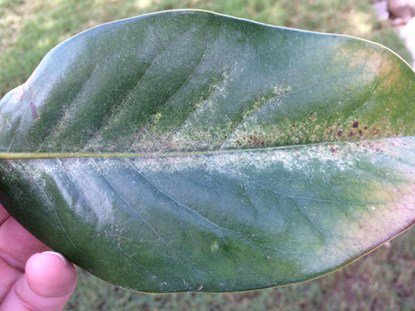In the thick of summer, pesky pests called spider mites make themselves at home on our plants. Their mission? Pierce and feed on plant leaves.
The best way to protect your plants from spider mite damage is to recognize the signs of an infestation, treat it and take precautionary steps to prevent future problems.
Below, you’ll find all the info you need to identify and get rid of spider mites.
What are spider mites?
Spider mites are teeny tiny garden pests most closely related to spiders and ticks.
What do spider mites look like?

Under a magnifying glass, it’s clear that spider mites come in a wide variety of colors and patterns.
But these pests are incredibly small—we're talking one millimeter at most, which is about how thick a credit card is! To the naked eye, spider mites just look like red, yellow, black or brown moving dots.
What causes spider mites
Because of their size, spider mites can easily sneak their way onto our landscapes. There may be spider mites on outdoor plants you bought from a garden center or nursery. Or they may be blown in by the wind.
Spider mites can also spread pretty quickly because they feed on a range of plants. Whether indoor or outdoor, evergreen or deciduous, spider mites aren't very picky about what they eat.
Visible damage caused by spider mites

Even though spider mites cut into and feed on the bottom of tree leaves, their damage appears on top. There are three key signs of a spider mite infestation:
- Tiny white or yellow spots on the top of tree leaves or needles
- Silky webs woven around tree leaves and stems
- A yellow or bronze appearance in one or many areas of the tree (this happens with a heavy infestation)
If you suspect spider mites have invaded your tree but want to know for sure, hold a sheet of paper under a branch and lightly shake it. The mites will fall off and look like speckles on the paper.
How to get rid of spider mites
Here’s how to treat spider mites in the summer or winter season:
- In summer, a forceful spray of water can knock spider mites right off your tree. Use a hose to rinse your tree a few times throughout the season. You must spray the bottom of the leaves since that is where the spider mites live.
- During winter or any time before budbreak in spring, use dormant oil to get rid of spider mite eggs that are settled on your tree. Read more about applying dormant oil to your tree.
Knowing natural predators, i.e. what eats spider mites can also help. Rival insects like predator beetles or lacewings can help cut down on spider mite populations
How to prevent spider mites
Spider mites attack during drought season because they love stressed out plants. During hot and dry periods, keep your plant hydrated by providing at least one inch of water per week and adequate mulch.







